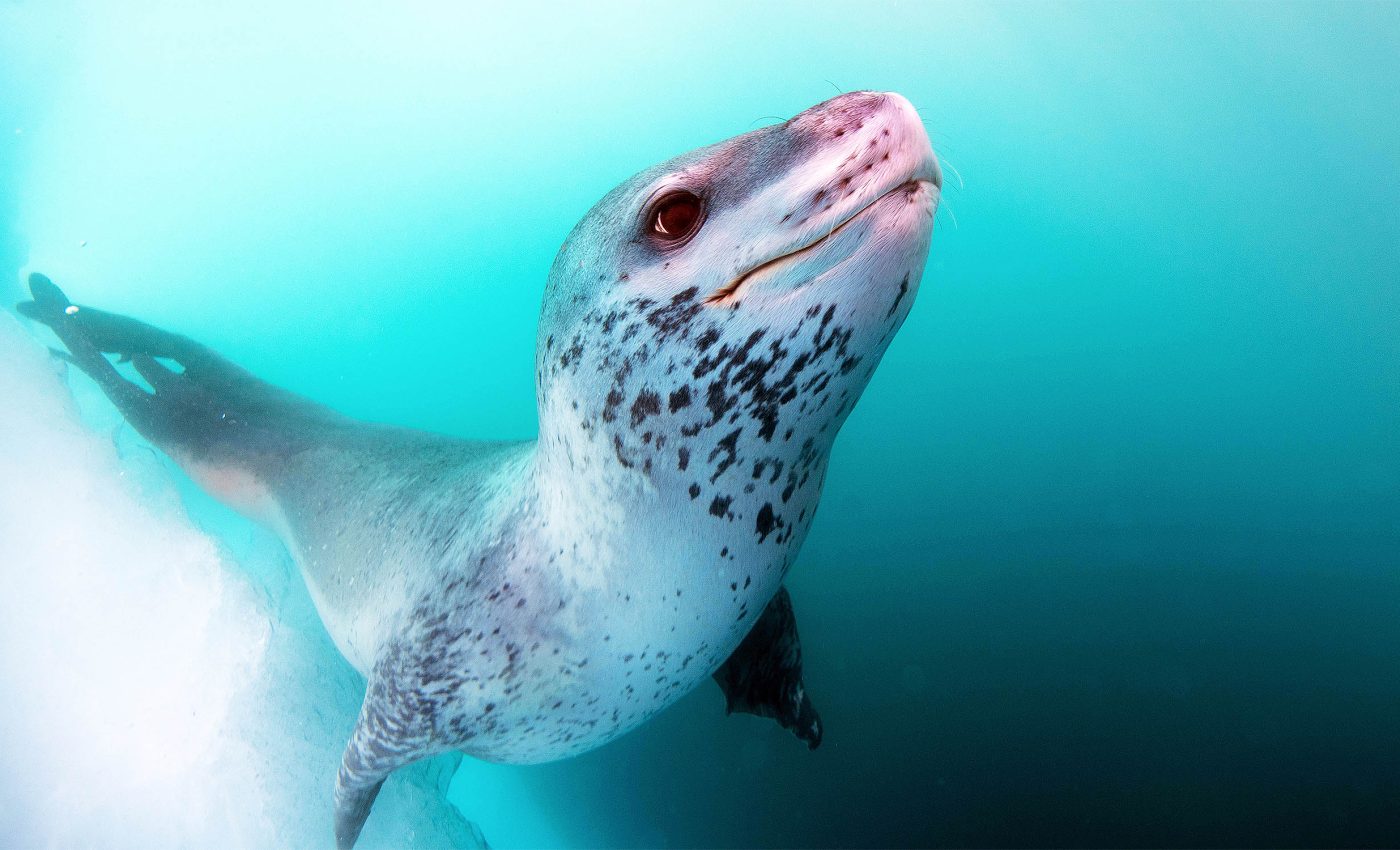
Leopard seals sing songs underwater that are strikingly similar to nursery rhymes
Leopard seals, some of the loneliest animals in Antarctica, may have more in common with us than we thought. A new study reveals that these massive, solitary predators spend hours underwater each day singing songs that echo the structure of the nursery rhymes we sing to children.
The discovery comes from researchers at UNSW Sydney. The team analyzed old recordings of leopard seal calls and found striking similarities in the structure of their songs and the predictability of human rhymes.
“Leopard seal songs have a surprisingly structured temporal pattern,” said Lucinda Chambers, a PhD candidate at UNSW and the study’s lead author.
“When we compared their songs to other studies of vocal animals and of human music, we found their information entropy – a measure of how predictable or random a sequence is – was remarkably close to our own nursery rhymes.”
But don’t mistake the singing for lullabies. The seals aren’t crooning to their young. In fact, it’s the males who do most of the vocalizing, and their reasons have more to do with competition and courtship.
How leopard seals spend spring days
Leopard seals live in the icy waters around Antarctica. They’re apex predators who spend most of their lives alone. But during spring, from late October to early January, something changes.
Male seals begin a daily ritual. They swim beneath the pack ice and sing. For hours on end, they alternate two minutes underwater with two minutes at the surface, cycling through this pattern up to 13 hours a day.
Study co-author Professor Tracey Rogers from UNSW began recording leopard seal songs in the 1990s.
“They’re incredibly committed. It’s big business for them,” said Professor Rogers. “They’re like the songbirds of the Southern Ocean. During the breeding season, if you drop a hydrophone into the water anywhere in the region, you’ll hear them singing.”
Songs that carry across long distances
These aren’t random noises. The calls are composed of five core sounds shared by the population. What makes each seal’s song unique isn’t the sound itself, but the order and structure.
“You can’t tell them apart by how the call sounds. It’s the order and pattern that matters,” explained Professor Rogers.
“They’ve stylized it to an almost boring degree, which we think is a deliberate strategy, so their call carries a long distance across the ice.”
Purpose of the leopard seal calls
Male leopard seals are spread far apart on the sea ice, but their voices carry. A single call can travel long distances underwater. That’s useful during breeding season, when females are only in heat for a few days each year.
“The greater structure in their songs helps ensure that distant listeners can accurately receive the message and identify who is singing,” noted Chambers.
The singing might help attract mates, but it also sends a signal to rivals. These underwater performances could be about love – or territory.
“It’s a bit of a dual message,” said Professor Rogers. “It could be a ‘this is my patch’ to other males and also a ‘look how strong and lovely I am’ to the females.”
“It’s like they’re saying, ‘I’m the biggest and the strongest, look how long and how loud I can sing,'” said Chambers.
Features of leopard seal songs
To better understand how leopard seal songs compare to other species, the researchers analyzed entropy – essentially how repetitive or predictable a sound sequence is.
They compared recordings from 26 male leopard seals to vocal sequences from humpback whales, bottlenose dolphins, squirrel monkeys, and several types of human music, including baroque, classical, romantic, contemporary, and Beatles songs.
What stood out was how closely the leopard seal songs matched the structure of nursery rhymes.
“Nursery rhymes are simple, repetitive and easy to remember – that’s what we see in the leopard seal songs,” said Chambers.
“They’re not as complex as human music but they aren’t random either. They sit in this sweet spot that allows them to be both unique and highly structured.”
Each seal has its own signature song
The sound recordings analyzed in the study were from the 1990s, when Professor Rogers would bike across Antarctica to the ocean’s edge, mark individual seals with dye, and return at night to record their songs.
“They sing at night, so I would mark them during the day and go back out at night to visit each of the seals to get recordings from different males,” she said.
While all the seals use the same five calls, each male puts them in a distinct order – creating a kind of signature.
“We think it’s a bit like each seal having its own name,” explained Chambers. “They’re all using the same alphabet of five sounds – but the way they combine them creates a pattern that’s individually distinctive.”
An evolving story
With today’s tools, the researchers want to return to Antarctica and investigate what has changed.
According to Chambers, the next step is to use mathematical models to test whether leopard seals use their songs like dolphins use signature whistles – to announce individual identity.
“We want to know if new call types have emerged in the population,” she said. “And if patterns evolve from generation to generation.”
“We’d love to investigate whether their ‘alphabet’ of five sounds has changed over time.”
It turns out that in the coldest, quietest places on Earth, animals are still finding ways to be heard – and remembered.
The full study was published in the journal Scientific Reports.
—–
Like what you read? Subscribe to our newsletter for engaging articles, exclusive content, and the latest updates.
Check us out on EarthSnap, a free app brought to you by Eric Ralls and Earth.com.
—–













